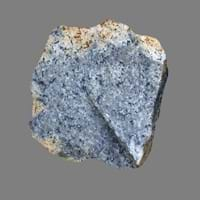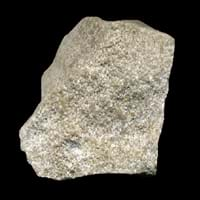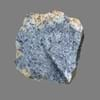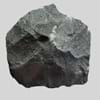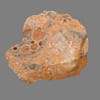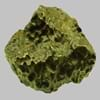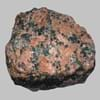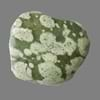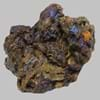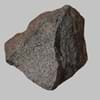Definition
Shonkinite is a rare, dark-coloured and intrusive igneous rock which contains augite and orthoclase feldspar as its primary constituents
Oolite is a sedimentary rock formed from ooids, spherical grains which are composed of concentric layers of calcite
Discoverer
Unknown
Unknown
Etymology
From the name of Shonkin Sag ranges in the Highwood Mountains of north-central Montana, US
From oo- + -lite, after German Oolit. A rock consisting of fine grains of carbonate of lime
Class
Igneous Rocks
Sedimentary Rocks
Sub-Class
Durable Rock, Medium Hardness Rock
Durable Rock, Medium Hardness Rock
Group
Not Applicable
Volcanic
Other Categories
Coarse Grained Rock, Fine Grained Rock, Medium Grained Rock, Opaque Rock
Fine Grained Rock, Opaque Rock
Texture
Earthy
Clastic or Non-Clastic
Color
Brown, Buff, Cream, Green, Grey, Pink, White
Black, Blue, Brown, Cream, Green, Grey, Pink, Red, Silver, White, Yellow
Durability
Durable
Durable
Scratch Resistant
Yes
Yes
Appearance
Banded and Foilated
Rounded and Rough
Interior Uses
Decorative Aggregates, Flooring, Homes, Interior Decoration
Decorative Aggregates, Flooring, Interior Decoration
Exterior Uses
As Building Stone, As Facing Stone, Garden Decoration, Paving Stone
As Building Stone, As Facing Stone, Garden Decoration, Paving Stone
Other Architectural Uses
Curbing
Not Yet Used
Construction Industry
As Dimension Stone, Cement Manufacture, Construction Aggregate, for Road Aggregate, Landscaping, Making natural cement, Manufacture of Magnesium and Dolomite Refractories
Cement Manufacture, Cobblestones, Landscaping
Medical Industry
Not Yet Used
Not Yet Used
Antiquity Uses
Artifacts, Monuments, Sculpture
Artifacts
Commercial Uses
Cemetery Markers, Creating Artwork
Creating Artwork, Jewelry, Used in aquariums
Types
Not Available
Not Available
Features
Available in Lots of Colors and Patterns, Is one of the oldest rock, Matrix variable
Available in lots of colors, Generally rough to touch, Very fine grained rock
Archaeological Significance
Monuments
Used
Not Yet Used
Famous Monuments
Data Not Available
Not Applicable
Sculpture
Used
Not Yet Used
Famous Sculptures
Data Not Available
Not Applicable
Figurines
Used
Not Yet Used
Formation
Shonkinites are formed due to alkaline igneous activities and are generally formed in thick continental crustal areas or in Cordilleran subduction zones.
Oolites form when layers of calcite are deposited around a sand grain or fossil piece and are rolled around in calm water, which makes them round.
Mineral Content
Amphibole, Biotite, Feldspar, Hornblade, Micas, Muscovite or Illite, Plagioclase, Pyroxene, Quartz
Calcite, Chert, Clay, Dolomite, Quartz, Sand, Silt
Compound Content
Aluminium Oxide, CaO, Iron(III) Oxide, FeO, Potassium Oxide, MgO, MnO, Sodium Oxide, Phosphorus Pentoxide, Silicon Dioxide, Titanium Dioxide
Aluminium Oxide, Ca, NaCl, CaO, Iron(III) Oxide, FeO, MgO
Types of Metamorphism
Burial Metamorphism, Cataclastic Metamorphism, Contact Metamorphism, Hydrothermal Metamorphism, Impact Metamorphism, Regional Metamorphism
Not Applicable
Types of Weathering
Biological Weathering, Chemical Weathering, Mechanical Weathering
Biological Weathering, Chemical Weathering, Mechanical Weathering
Types of Erosion
Chemical Erosion, Coastal Erosion, Sea Erosion, Water Erosion
Chemical Erosion, Coastal Erosion
Grain Size
Medium to Fine Coarse Grained
Fine Grained
Fracture
Not Available
Conchoidal
Porosity
Less Porous
Less Porous
Luster
Subvitreous to Dull
Pearly to Shiny
Compressive Strength
Not Available
Cleavage
Perfect
Non-Existent
Toughness
Not Available
1
Specific Gravity
2.6-2.7
Not Available
Transparency
Opaque
Opaque
Density
2.6-2.8 g/cm3
Not Available
Specific Heat Capacity
Not Available
Resistance
Heat Resistant, Impact Resistant, Wear Resistant
Heat Resistant, Wear Resistant
Deposits in Eastern Continents
Asia
China, India, Iran, Saudi Arabia, Sri Lanka, Taiwan, Thailand, Turkey, Vietnam
Brunei, India, Indonesia, Malaysia, Singapore, Thailand, Vietnam
Africa
Angola, Egypt, Madagascar, Namibia, Nigeria, South Africa
Cameroon, Chad, Ghana, Kenya, Malawi, Sudan, Tanzania, Togo, Zambia, Zimbabwe
Europe
Bulgaria, England, Germany, Norway, Romania, Switzerland
United Kingdom
Others
Not Yet Found
Not Yet Found
Deposits in Western Continents
South America
Brazil, Chile
Colombia
Deposits in Oceania Continent
Australia
New Zealand, Queensland, South Australia, Western Australia
Adelaide, New Zealand, Queensland, Tonga, Victoria, Yorke Peninsula
All about Shonkinite and Oolite Properties
Know all about Shonkinite and Oolite properties here. All properties of rocks are important as they define the type of rock and its application. Shonkinite belongs to Igneous Rocks while Oolite belongs to Sedimentary Rocks.Texture of Shonkinite is Earthy whereas that of Oolite is Clastic or Non-Clastic. Shonkinite appears Banded and Foilated and Oolite appears Rounded and Rough. The luster of Shonkinite is subvitreous to dull while that of Oolite is pearly to shiny. Shonkinite is available in brown, buff, cream, green, grey, pink, white colors whereas Oolite is available in black, blue, brown, cream, green, grey, pink, red, silver, white, yellow colors. The commercial uses of Shonkinite are cemetery markers, creating artwork and that of Oolite are creating artwork, jewelry, used in aquariums.
